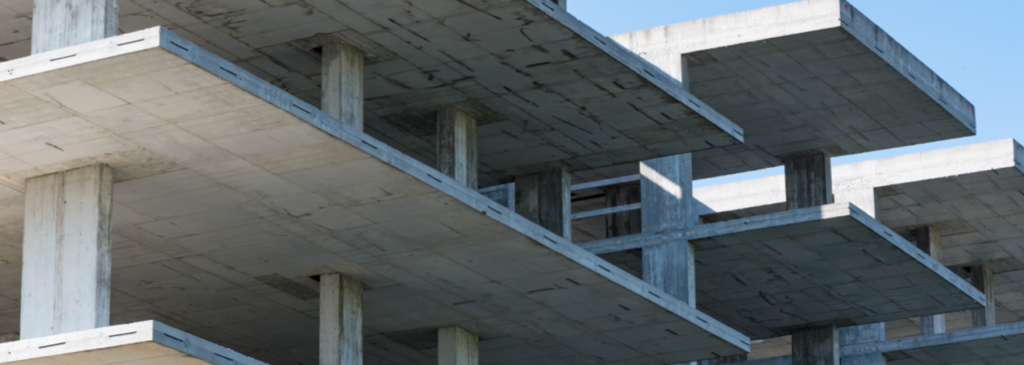Graphene oxide as an additive in concrete:
innovation in construction
Mexico City – 9 years after being established, Energeia Fusion S.A. de C.V., the most important Mexican company in Latin America and promoter of the renowned Graphenemex® brand, launches the Graphenergy construction line, a new generation of nanotechnological additives for concrete with graphene oxide, which promises to strengthen the infrastructure and construction industry .
El Grafeno, también conocido como “el material del futuro”, finalmente traspasó la barrera de los laboratorios de investigación y se ha convertido en una realidad como potencial solución de innumerables necesidades sociales, ambientales e industriales. Este maravilloso nanomaterial consiste láminas atómicas de carbono extraídas del grafito y, gracias a sus interesantes propiedades mecánicas, eléctricas, térmicas, ópticas, etc., durante los últimos años se han invertido millones de dólares alrededor del mundo para tenerlo disponible en distintas aplicaciones, dentro de las cuales, la industria de la infraestructura y construcción ha logrado ser una de las más favorecidas.
Graphene career in the construction industry
2004 – Isolation of Graphene.
2010 – Recognition of the scientists Konstantin Novoselov and Andre Geim with the Nobel Prize in Physics for the isolation of Graphene.
2013 – Energeia Graphenemex is established, the first company in Latin America specialized in the production of graphene materials and development of applications.
2018 – Graphenemex® launches Nanocreto® on the market, the first additive for concrete with graphene oxide in the world (Mexico).
2019 – Graphenenano launches Smart additives, additives with graphene for concrete (Spain).
2019 – GrapheneCA presents its line of OG concrete admix products for the industry
concrete (USA).
2021- Scientists from the University of Manchester develop the concrete admixture Concretene (England).
2022 – Energeia – Graphenemex® launches the Graphenergy Construction line, a
improved version of its concrete admixture (Mexico).
Graphenergy construction is a water-based admixture compatible with other admixtures, designed to improve the quality of concrete or concrete, with the aim of reinforcing the pre-existing characteristics of concrete, such as mechanical resistance, but also to add value by providing non-existent properties in the original design, such as waterproofing, thermal insulation and antimicrobial protection.

How does Graphenergy construction work?
1. High impermeability and anti-corrosiveness
Graphenergy construction within the cementitious matrix forms molecularly more ordered and closed architectures that reduce the porosity of the structure and therefore create hydrophobic surfaces that, at a microstructural level, also hinder the passage of liquids and gases, hindering the passage of the agents that cause structural deterioration, especially in aggressive environments such as coastal or highly polluted environments.
Structure closure at the molecular level has also been demonstrated by electrical diffusivity measurements; These results support the protection of the metal structure of the concrete, increasing the useful life of the structure.
2. Improved mechanical properties
The more compact and organized architecture at the molecular level that Graphenergy Construction Graphene Oxide achieves within the concrete, allows microcrack limitation centers to form and therefore the structure becomes stronger when subjected to compression or tension loads, while favoring its flexibility.
3. Thermal insulation
The thermal insulation offered by Graphenergy construction is due to the ability of graphene oxide to dissipate heat with great efficiency and even to withstand intense electrical currents without heating up.
4. Antimicrobial protection
Graphenic additives offer different fronts of chemical and physical attacks of combined interaction, highly resistant to the formation of microbial biofilms, this means that microorganisms do not find a suitable environment to grow and release their by-products (eg. sulfuric acid) and, therefore, is not generated or, failing that, delays the appearance of microbiologically induced corrosion of concrete (MIC). This protection is extremely important, for example, for water systems since, inside the pipes, MIC is capable of dissolving up to 25 mm of concrete per year.
References
1. Basquiroto de Souza F., Proposed mechanism for the enhanced microstructure of graphene oxide–Portland cement composites. JOBE. 2022, 54, 104604
2. Dimov D., Ultrahigh Performance Nanoengineered Graphene Concrete Composites for Multifunctional Applications. Adv. Funct. Mother. 2018, 28, 1705183
3. Shamsaei E., Graphene-based nanosheets for stronger and more durable concrete: A review. Constr Build Mater. 2018, 183, 642
4. Krishnamurthy A., Superiority of Graphene over Polymer Coatings for Prevention of Microbially Induced Corrosion. 2015. Scientific Reports, 5:13858
5. https://blog.ferrovial.com/es/2022/04/graphene-sustainability-construction/
6. https://www.graphenano.com/graphene-arrives-in-construction-to-increase-the-resistance-of-concrete/
7. https://www.manchester.ac.uk/
8. https://www.cdt.cl/desarrollan-concrete-with-nanoparticles-of-graphene-to-repel-water-and-cracks/

